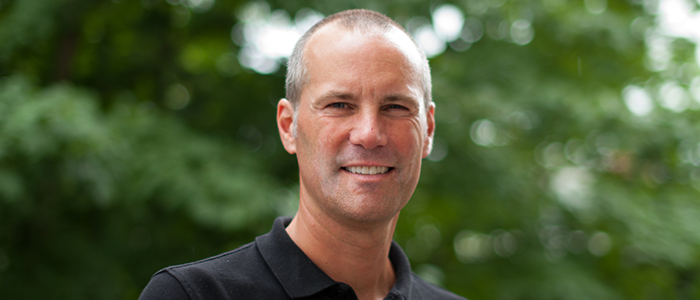Tackling medical student stress by focusing on the bigger picture

“Medicine is a profession that requires people to be able to care for others, and it’s very difficult to do that if there’s not an emphasis on caring for yourself,” said Dr. Christopher Watling, associate dean of Postgraduate Medical Education at Schulich Medicine & Dentistry.
While this statement may seem obvious, surveys continue to highlight alarming levels of stress and burnout among medical students.
In a commentary piece recently published in Perspectives on Medical Education, Dr. Watling remarks on the several stressors that medical students encounter throughout their education, and the interventions that have been put in place to help alleviate some of this pressure. He refers to a small study from a medical school in Germany that looked at the sources of stress, and made proposals for better ways to tackle the issue on a greater scale.
The study utilized focus groups made up of medical students, and found that curricular stressors dominated their discussions — inadequate prioritization of course material, unbalanced workload distribution and long working hours all contributed to student stress.
The groups’ suggestions for health promoting interventions shifted the focus away from individual students and toward larger system issues.
“I thought the most interesting part of the study was the shift in focus, because they concentrated on the curriculum and learning environment that influences how these students experience their time at medical school,” Dr. Watling said. “A lot of work on wellness has revolved around developing individual resilience and providing individual students with opportunities to reduce their own stress, but that approach may be insufficient — the problem may be within the environment we are creating for these students.”
Dr. Watling thinks the reason our solutions have revolved around individuals for so long is not from a lack of recognizing that there are other factors outside of an individual’s control, but because it is very difficult to change a culture.
“It becomes a little bit easier to develop a range of resources that individuals can choose to take up, as opposed to addressing some difficult questions about whether the culture that has been created is optimal,” he said.
Medical schools have already begun to shift their focus, offering new solutions that aim to help tackle student stress. One solution that Schulich Medicine & Dentistry and other schools have put into place is moving from numerical grades to a pass/fail system. Dr. Watling said there have been numerous studies that have shown this shift improves measures of student wellness, and does not decrease measures of student performance.
“When you take away the numerical grades and give students a pass or fail, they still finish with the same level of competence and performance, but their personal wellbeing has improved,” he said. “This is a nice example where medical schools have embraced a cultural change, and recognized that it has a useful wellness impact on students.”
Even though Dr. Watling thinks Schulich Medicine & Dentistry is leading rather than following in this cultural swing, he explained there is a struggle to find the right balance. The goal of medical school is to train students for a stressful profession, so those stressors cannot be eliminated completely. At the same time, the curriculum should not be so stressful that it begins to diminish student performance.
Schulich Medicine & Dentistry will continue to strive to find the right balance by questioning if there are better way to address these stressors, all while growing, developing and improving the Learner Equity & Wellness Office and other wellness initiatives and resources.
“The fundamental values and identity of what it means to be a doctor are established really early,” Dr. Watling said. “In some ways, medical school is our best opportunity to set the bar where we want it, and to shape the development of these learners in the right kind of way. That’s what our goal is here at the School.”









